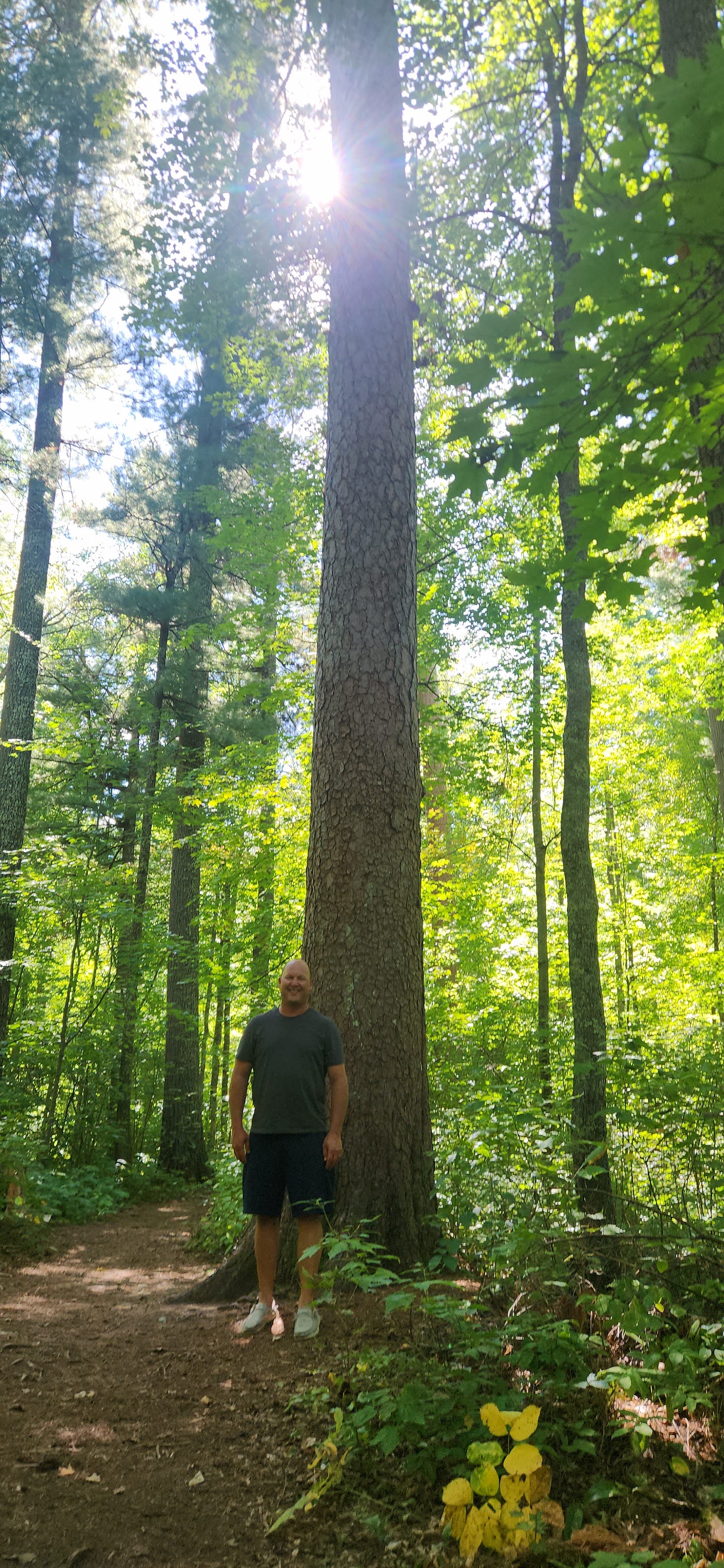Saved by a Bad Map
The Mistake that Gave us the "Lost 40"
“The best time to plant a tree was 20 years ago. The second best time is now.”
– Chinese Proverb
Saved by a Bad Map
A special shout-out and thanks to the coaches I had the pleasure to talk with at Hastings and Cass Lake - Bena High Schools over the past week!
This week while visiting Cass Lake - Bena High School, I visited a remarkable patch of forest that survived because of a mistake.
It’s called the “Lost 40,” and it exists because in November 1882, a surveyor named Josias A. King mapped an error deep inside Minnesota’s forests that accidentally saved something irreplaceable.
King and his crew were finishing a month‑long survey in the north woods. Bone-chilling November winds snapped their canvas tents. They ate flour, pork, beans, and dried apples for every meal, and they were forty miles from the nearest settlement. The crew was cold, tired, and ready to be done.
In the push to finish, King mapped 144 acres of pristine timber as part of Coddington Lake, a small lake sitting a half mile away. The error went into the official records, and when timber crews swept across northern Minnesota in the late 1800s, they skipped this “underwater” parcel that appeared as unavailable for timber harvest on their maps.
Today the Lost 40 stands as an untouched, quiet treasure. Red and white pines 300–400 years old stand more than 100 feet tall, some with trunks two to four feet across. The most impressive red pine is around 120 feet tall and nearly ten feet around.
This is a remnant of what once was. Less than two percent of Minnesota forest is old growth now. While surrounding areas were harvested and replanted for speed, these giants grew slowly, steadily, and deep. They survived because they were overlooked long enough to be recognized—and then protected.
Walking the Lost 40 trail, three ideas jumped out at me.
What you plant now may not reach its full potential for years.
These giant trees began as fragile saplings. The people who first saw them never witnessed their full stature. That’s leadership. We plant values, habits, and belief in people knowing we may not see the final height. The student struggling today may one day teach. The bench player may become the coach who shapes a generation. The program you start might bear its best fruit after you’ve moved on.
Great leaders plant trees they’ll never sit under.
Real growth takes time—don’t rush it.
We live in an instant world that wants immediate results. But the Lost 40 reminds us that some of the best things in life will grow on time’s terms, not ours. Minnesota winters are harsh. Growth rings come slowly here. Yet that slow work produced something that lasts. The strongest teams and cultures develop the same way—deep roots, steady progress, patient cultivation.
Don’t mistake slow growth for no growth. Oftentimes development happens quietly, when no one is watching, when the real work is getting done.
Sometimes a mistake can lead to something extraordinary.
Josias King’s error became a great gift. What looked like professional failure preserved a living legacy. Leadership is full of moments like that … a plan that “fails” exposes a better path, a budget cut sparks creativity, a missed hire leaves room for the right person. Not every mistake is a miracle—but every mistake is opportunity for growth. If we respond with humility and curiosity, errors can become assets.
Every great leader has a Lost 40—something valuable that exists because you had the wisdom to leave it alone, the patience to let it grow, or the courage to see potential in what others labeled a mistake.
What’s yours?
The quiet student everyone overlooks?
The “failed” project that’s actually teaching resilience?
The slow, steady culture others don’t understand yet?
Plant for the future. Be patient with growth. Treat mistakes as an opportunity gained. Give people time, space, and trust to grow on their own terms. Because the most magnificent things often flourish when they’re protected and allowed to put down roots.
“Mistakes are the portals of discovery.”
– James Joyce
Connecting this quote to the story. Errors aren’t always dead ends—they can be gateways to unexpected breakthroughs, hidden strengths, or opportunities we never would have found otherwise.
This week’s Chasing Influence tip: Coaching and leading is long work. If you want big results, you must plant deeply, wait patiently, and even see errors as opportunities.
If you enjoyed this story, a series of three Chasing Influence workbooks is available. Stories are accompanied by discussion questions and answers. Each workbook contains 33 lessons to use with any team.
Updates on Chasing Influence
Chasing Influence: Transformational Coaching to Build Champions for Life is available in Kindle, softcover, hardcover, and audiobook editions.
For additional resources, links to podcast appearances, and other Chasing Influence news, click here.


